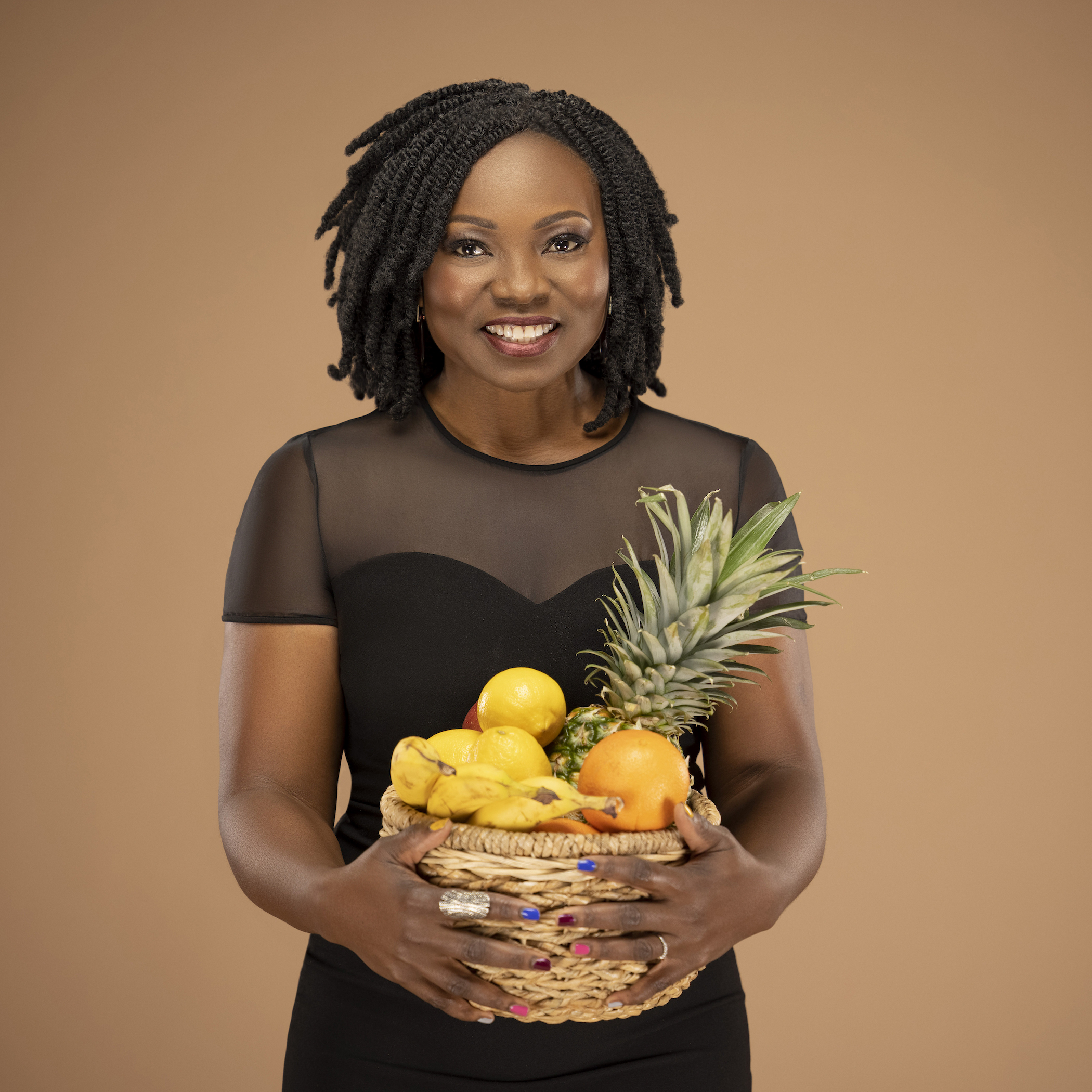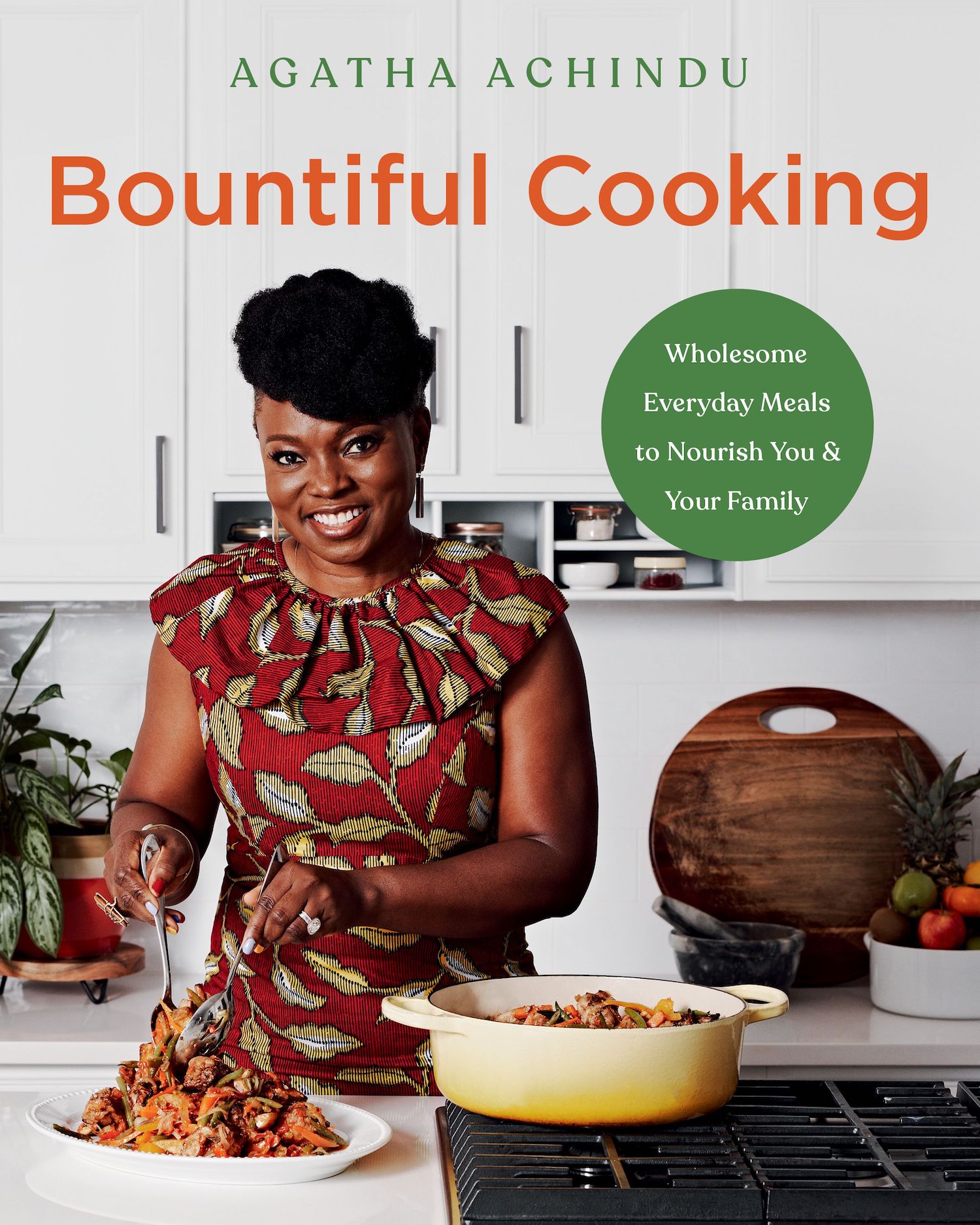By Rebecca L. Rhoades
As a child in Cameroon, Agatha Achindu would eat food picked from her family’s farm. Rice, corn, peas, beans, mangoes, and guavas were seasonal staples. Fish was fresh from the sea. And bread was made daily by the local baker.
“We didn’t eat this way because it was trendy. It was just our way of life,” she says.
But after moving to the U.S. to study, Achindu learned that not everyone follows a similar diet. Processed foods, sugary drinks, chemicals, and food colorings are common in America. Seeing how her friends and those around her were eating propelled Achindu to help people achieve better health through nutrition and lifestyle changes.

A certified integrative nutrition health coach, Achindu is the founder of Life Unprocessed, an Atlanta, Georgia-based wellness consultancy. She’s also the founder of Yummy Spoonfuls, an organic baby food company. She frequently appears as a health expert in such notable media outlets as the Today Show, CNN, Forbes, People Magazine, and more.
We recently sat down with Achindu to discuss the state of the American diet and learn how eating clean, natural ingredients can put us on a path toward a healthier lifestyle.
Coming from a country where clean eating was simply a way of life, what were your thoughts when you first encountered the American diet?
Imagine being a 23-year-old in a grocery store for the first time. Where was the food? Prior to coming to the United States, the only things I’d seen in cans were tomato paste and sardines. So imagine coming here and seeing things like corn in a can. And at the time, organic foods weren’t a thing like they are today. I remember my roommate opening a can of corn. When I smelled it, I couldn’t understand it. It was offensive. Or, at home we would make pound cake. So when I walked into a store and saw a pound cake, I remember thinking it looked so fluffy. Then I got home and took a bite. It was like biting into a bowl of sugar. At that point, I wasn’t thinking about health and wellness. I was thinking about taste, and I started making my own food. That’s how that crusade started for me.
You’ve said in the past that many American foods aren’t real. What kind of damage are these chemicals doing to our bodies?
Go to the CDC or World Health Organization website and look at the list of top 10 diseases that are killing people in America. Seven out of the 10 are tied to diet and lifestyle. High blood pressure, cholesterol, diabetes: Those things are tied to nutrition and lifestyle. When you look at food in this country, it’s almost like a science project. It’s Omega-3, vitamin C, protein. Health is something that the marketing industry plays with for money. Food is not the enemy. It’s how it’s processed. When you think about how corn or rice have been vilified in this country, you would not believe that there are parts of the world where there are centenarians who live on rice. I grew up eating rice. Is it the rice that we cook, or is it the fact that the rice has been parboiled and powdered? We mess with food way too much, from bread to butter. We are told that real butter is bad, but the engineered stuff causes so much inflammation in the body. It’s just chemicals.
Can knowing how to read the manufacturer’s food labels help people make healthier food choices?
I remember the first time I wrote to Congress. I had picked up a lemon cream pie at the store. And when I got home and looked at the label, I saw that there was no cream, there were no lemons. So I called the company, and they said they used lemon oil or something like that and coconut oil instead of cream. So I tell people all the time, “Don’t look at what’s on the front. Go to the back and read the label.”
By law, the manufacturer is supposed to tell you what’s in the product. That’s one thing that we as consumers are lucky about. But a lot of people don’t know how
to read the label. The first thing on the label is the main ingredient. In a lot of products, the first ingredient is sugar. But manufacturers are getting smarter. They don’t want sugar to be the first ingredient, so they will use different types of sweeteners. For example, there are some pasta sauces that have agave, raw honey, beet nectar, or beet sugar or coconut sugar – all of those are sweeteners. So when you see brown sugar and cane sugar and agave, you’ll know that there are three different sweeteners in this little thing that you have in your hand. Or sodium. Look at something like Hamburger Helper. It’s a tiny, tiny box. I think it’s like two servings, and of course, there’s no way you can’t eat the whole thing. But there’s about 900 milligrams of sodium in one serving. So if you eat the entire thing, you have to double that level. Can you imagine how much sodium that is? Serving size is something really tricky that people need to pay attention to. Especially with snacks. I remember trying to explain that to my son when he was younger. How you’re feeding your child today has such an impact when they’re older. Data from the WHO shows that the chronic issues we see today as adults come from deficiencies during childhood.
Treating dietary issues is big business.
There is so much money in sickness care. When we’re healthy, there is no money. I had a client who had been on high blood pressure medication for 20 years, and it took us 18 months to get her off her meds. And the reason was that she was comfortable taking them – ‘I can eat my bacon, I can eat my eggs, I can do all the things that I’m doing and take my meds and I’m good.’ I cannot tell you how many Type 2 diabetics I work with whose doctors tell them they can never get off their medications. These chronic diseases are lifestyles. But the human body is magical. It can heal when you provide it with what it needs.
Tell us about your new cookbook, Bountiful Cooking.
This cookbook was a labor of love. I wrote a cookbook that I would use because of the way that nutrition has been sold in the United States. We don’t have to give up entire groups of food to be healthy.
It’s not paleo, it’s not Whole30, it’s not Atkins or vegan or vegetarian. It’s none of that. You don’t have to give up food if you don’t want to. I’m trying to showcase food that’s made fresh and cooked with love and all the right ingredients. So Bountiful Cooking, just as the name says, is about bountiful food. My philosophy is that food is not just for energy. Food is community. Food is comfort. It’s the thread that binds communities together even in places where there is not a common language.

Although this isn’t a vegetarian cookbook, it does emphasize a plant-forward diet. Why is that?
Where I grew up, we didn’t eat meat every day. We ate a lot of plants. Then on the weekend, especially Sunday, is when we would do the big family meal, with roasted fish, chicken, beef. When I first came to this country, I was 23. For my 24th birthday, my friends took me out, and it was the first time I went to a fancy restaurant. For the steak, the menu said a pound or even more. Growing up, a pound of meat is what we would cook for the entire house. The amount of meat that you’re supposed to eat is 4 ounces – the
size of your palm. So we overindulge.
The cookbook is plant-heavy because all the recipes are what I make in my own home. It’s not that we don’t eat meat, we just don’t eat it every day. This isn’t a diet book. I think dieting is dysfunctional. It’s not only costing us money, but it’s costing us happiness. It’s a way of living that’s not sustainable. I hope my cookbook is the one to make people say, “This is what I was waiting for. I’m tired of dieting. Let me just eat healthy foods that are good for my body.”
What advice would you give to people about eating healthy?
The biggest thing is that it shouldn’t be all or nothing. For example, if every day you have breakfast, I would say, look into that breakfast and let it be something that nourishes your body. It’s not what you do 20% of the time that will impact your health. It’s what you do 80% or more of the time.
So take little steps, and as you get comfortable, then you can add things. I also believe that we need to keep educating people on the importance of the immediate effect of how they are eating, and the way it’s impacting them.
When you eat and you’re tired, when you want to take a nap, that’s not what food that nourishes the body should do. Food should give you energy, it should make you stand straight, it should make you happy. If after you eat, if you feel like you’ve been slapped on the head, that’s not nourishing to your body. And this happens to a lot of people because they think that in the morning they have to have cereal or a waffle, and then for lunch it’s a sandwich or cold cuts. And then dinner is some form of pasta. There’s no veggies, no fruit. And you end up feeling tired, sluggish, all day. That’s your body telling you that it’s not getting enough nutrients, it’s not getting what it needs to come alive.
We are the food we eat. So start small. Every little bit goes a long way. Instead of soda, drink water. Don’t bring bad foods into your house, because if it’s not there, you’re not going to eat it. Love yourself enough to prioritize your health, because if you don’t change, you may have some chronic issues down the road.
Read more Good articles from Green Living Magazine.






